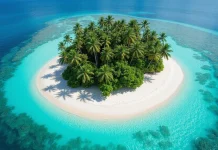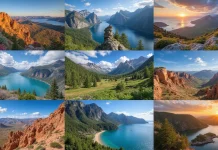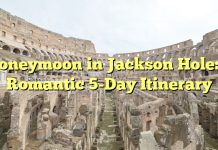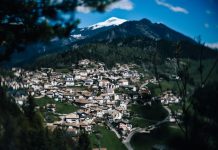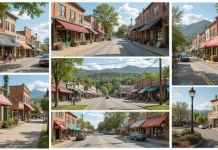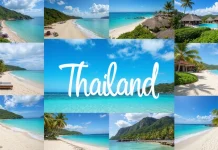Overview of Mount Rainier National Park
Mount Rainier National Park, located in Washington State, is a scenic marvel and a testament to the rugged beauty of the Pacific Northwest. Covering an area of over 236,000 acres, the park is home to Mount Rainier, an active volcano and the most glaciated peak in the contiguous United States. Standing at 14,411 feet, the mountain dominates the skyline and offers endless opportunities for adventure and exploration.
Historical Background
The history of Mount Rainier National Park is as rich and varied as its landscapes. Indigenous peoples have revered the mountain for millennia, with the native Puyallup, Nisqually, and Cowlitz tribes holding it as a sacred place. European exploration began in the 18th century, and by the late 19th century, efforts to recognize the area’s natural beauty led to its official designation as a national park in 1899, making it the fifth national park in the United States.
Formation of the Park
The formation of Mount Rainier National Park was driven by the growing conservation movement in America during the late 1800s. The park was established primarily to preserve its unique geology, diverse ecosystems, and inspiring landscapes. Public support, particularly from magazines and local enthusiasts of the time, played a crucial role in advocating for the park's protection.
Geology and Natural Features
Mount Rainier is a stratovolcano that has been shaped by eons of volcanic activity and glaciation, offering a dynamic laboratory for geologists and naturalists. The park’s diverse topography includes rugged cliffs, deep valleys, and numerous waterways.
Volcanic Activity
Though the mountain last erupted over a century ago, it remains an active volcano, monitored closely for seismic activity. Visitors to the park may notice steam vents and volcanic rock formations resulting from past eruptions. Educational programs and exhibits throughout the park provide insight into the geological forces that continue to shape the mountain.
Glaciers
Mount Rainier is the most glaciated peak in the contiguous United States, home to 25 major glaciers. The Emmons Glacier is the largest in terms of area, while the Carbon Glacier is the longest and thickest, an impressive sight that draws both scientists and tourists. These glaciers form stunning ice caves and provide a critical water source for the surrounding ecosystems.
Flora and Fauna
The park’s varying elevations and climates foster a range of habitats that support diverse plant and animal life.
Plant Life
From dense, verdant old-growth forests at lower elevations to alpine meadows blanketed with wildflowers higher up, Mount Rainier National Park showcases beautiful plant biodiversity. The subalpine meadows of Paradise and Sunrise are famous for their spectacular floral displays, featuring lupines, paintbrushes, and avalanche lilies, among other wildflowers.
Wildlife
The park is home to a range of wildlife, including elusive species like the Cascade red fox and the mountain goat, which are often spotted by visitors exploring higher elevations. Black bears, marmots, and various bird species, including the gray jay and Clark’s nutcracker, also make their home in the park. Responsible wildlife viewing is encouraged to ensure these creatures can continue to thrive.
Visitor Experience and Activities
Mount Rainier National Park offers activities for every type of traveler, from adventurous hikers and climbers to those seeking a peaceful nature retreat.
Hiking Trails
The park features over 260 miles of maintained trails, ranging from short, accessible walks to challenging backcountry treks.
Popular Trails
Among the most popular routes are the Skyline Trail at Paradise, known for its panoramic views of the mountain and its surrounding valleys, and the Sunrise Nature Trail, which offers breathtaking vistas and the chance to spot wildlife.
Backcountry Adventures
For those looking for solitude and adventure, the Wonderland Trail is a 93-mile loop encircling Mount Rainier, offering an immersive backcountry experience. The trail requires careful planning and a permit, as it exposes hikers to various terrain and weather conditions.
Climbing and Mountaineering
Mount Rainier is a magnet for climbers from around the world, seeking to conquer its summit. Climbing the mountain is challenging and requires technical skills, physical endurance, and proper equipment.
Routes and Seasons
There are several routes to the summit, with the Disappointment Cleaver and Emmons-Winthrop Glacier routes being the most popular. Most climbing takes place between May and September, when conditions are relatively stable. Climbers must register and obtain a climbing permit before setting out.
Guided Climbs
For those new to mountaineering, or those seeking to enhance their skills, several guide services operate in the park, offering trips led by experienced professionals. These guided climbs provide a safer, structured way to attempt a summit climb.
Camping and Lodging
The park offers various options for those planning to stay overnight, catering to different levels of comfort and adventure.
Campgrounds
There are several developed campgrounds within the park, including Cougar Rock and Ohanapecosh, both of which offer access to some of the park’s major attractions. Sites must be reserved in advance, especially during the peak season.
Backcountry Camping
For a more remote experience, backcountry permits allow visitors to camp in designated wilderness areas. These sites require careful planning and adherence to Leave No Trace principles to preserve the park's unspoiled beauty.
Lodging
For those preferring comfortable accommodations, the historic Paradise Inn and the National Park Inn in Longmire provide charming lodging options within the park. Reservations are recommended well in advance due to their popularity.
Educational and Ranger Programs
Educational programs are plentiful at Mount Rainier National Park, providing visitors with a deeper understanding of the park's natural and cultural history.
Ranger-led Activities
Throughout the summer months, park rangers lead informative walks, talks, and evening programs that explore topics ranging from geology to the park's wildlife. These activities are fun and engaging for all ages.
Visitor Centers and Museums
The Paradise Jackson Visitor Center offers exhibits, a theater, and information to help visitors make the most of their trip. Additionally, the Longmire Museum provides insights into the park's history and cultural heritage.
Seasonal Activities
Each season at Mount Rainier offers unique opportunities to witness the park's natural beauty and engage in outdoor recreation.
Spring and Summer
Spring and summer are popular times for hiking, wildflower viewing, and participating in educational programs. The higher elevations may still have snow in early spring, so visitors should check trail conditions before setting out.
Autumn
The fall months bring vibrant autumn foliage, offering a different kind of beauty. It’s a quieter time in the park as the crowds diminish and the days grow shorter, making it ideal for photographers and those seeking solitude.
Winter
In winter, the park transforms into a snowy wonderland, perfect for snowshoeing, cross-country skiing, and even sledding. The Paradise area receives substantial snowfall, and the ranger station offers equipment rentals for winter activities. Avalanche awareness is essential when venturing into snow-covered areas.
Conservation Efforts
Conservation is a vital aspect of Mount Rainier National Park's mission, aimed at preserving its distinctive landscapes for future generations.
Endangered Species Protection
Efforts are ongoing to protect and monitor endangered and sensitive species within the park, such as the northern spotted owl and the marbled murrelet.
Visitor Impact Management
Managing the effects of increased visitor numbers is crucial for maintaining the park's ecological integrity. Programs educate visitors on minimizing their impact and the importance of adhering to designated trails and camping areas.
Volunteering and Support
Several volunteer programs invite visitors to contribute to the park's upkeep and protection. Activities range from trail maintenance to educational outreach, allowing visitors to give back and deepen their connection to this remarkable place.
Travel Tips and Recommendations
To make the most of a visit to Mount Rainier National Park, travelers should consider several practical tips and insights.
Planning Your Visit
Planning ahead is crucial, especially during the peak summer season. Reservations for accommodations and permits should be made well in advance.
What to Pack
Packing should accommodate a range of weather conditions, as temperatures can vary greatly with altitude and time of day. Sturdy hiking boots, layered clothing, and waterproof gear are essential, as are a good map and compass for those venturing onto less traveled trails.
Getting There and Around
The park is accessible by car and is approximately a two-hour drive from Seattle. Rental cars or personal vehicles are the most convenient ways to reach and navigate the park, and driving conditions can change rapidly, especially during winter months.
Transportation Within the Park
Within the park, options include driving or taking advantage of shuttle services operating during the busy summer months. These shuttles reduce congestion and are a convenient way for visitors to reach popular destinations without the stress of finding parking.
Final Thoughts
Mount Rainier National Park offers an awe-inspiring journey into the heart of the Pacific Northwest wilderness. Through responsible exploration and engagement, visitors not only enrich their understanding and appreciation of this natural wonder but also help ensure its preservation for many generations to come. Whether you’re seeking adventure, solitude, or simply a connection with nature, Mount Rainier stands as an unforgettable destination.

